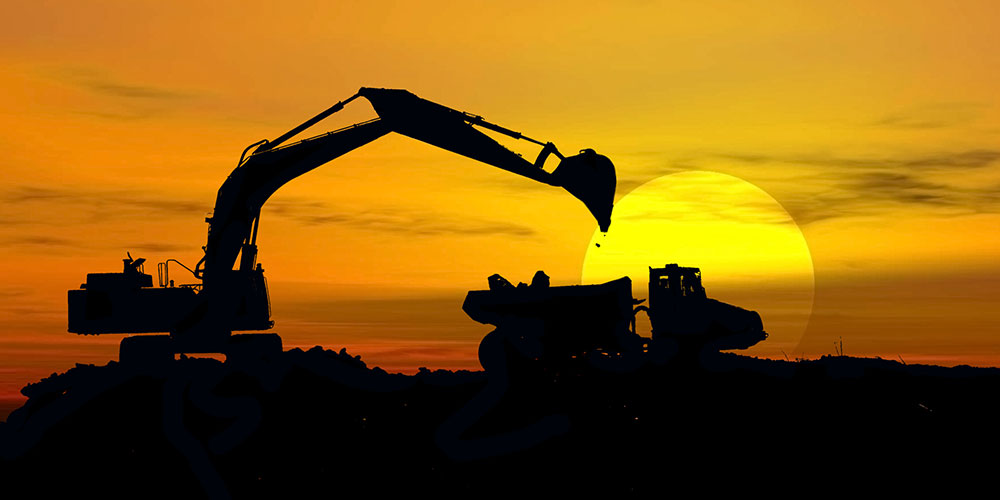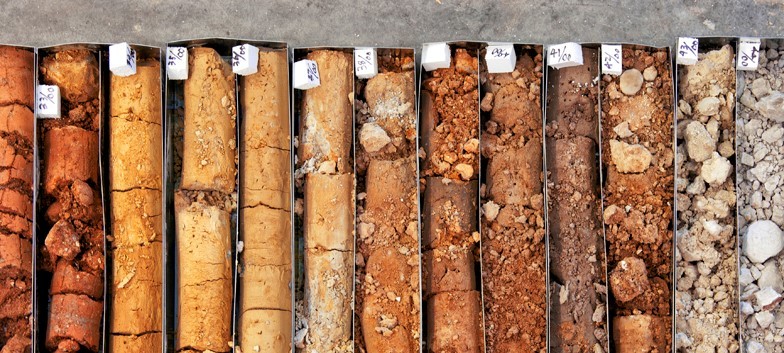Specialized Geotechnical Works for Sustainable Building And Construction Solutions
Wiki Article
Exactly How Consulting Engineers Enhance Geotechnical Design Projects: Insights Into Their Proficiency, Methodologies, and Collaborative Approaches
Consulting designers are pivotal in boosting geotechnical engineering projects, applying their specialized understanding to navigate the intricacies of subsurface conditions. Their collective methods foster communication among diverse project stakeholders, inevitably shaping the job's trajectory.Role of Consulting Engineers
The know-how of consulting designers in geotechnical engineering is basic to the successful implementation of building projects. These experts play a critical duty in evaluating soil and rock residential properties, which are critical aspects affecting style and construction decisions. By performing comprehensive website examinations, seeking advice from engineers accumulate vital information that notifies the layout procedure, guaranteeing tasks are built on stable and suitable ground.Consulting engineers additionally give very useful understandings into threat administration (geotechnical geologist). They recognize possible geotechnical dangers, such as landslides, dirt liquefaction, and settlement problems, enabling stakeholders to apply effective mitigation approaches. Their know-how aids in optimizing foundation designs, which can cause considerable expense financial savings and boosted safety and security
In addition, speaking with engineers function as a vital web link between project owners, architects, and service providers. Their capacity to equate intricate geotechnical data into workable referrals promotes partnership and promotes informed decision-making throughout the task lifecycle. This multidisciplinary method not only enhances task effectiveness however likewise makes certain compliance with regulatory criteria and best techniques.
Trick Methodologies in Geotechnical Engineering

One main approach is website examination, which entails carrying out area tests and research laboratory analyses to collect information on subsurface problems. Strategies such as Requirement Penetration Screening (SPT) and Cone Infiltration Testing (CPT) are widely made use of to evaluate soil stratigraphy and strength. In addition, geophysical methods, consisting of seismic and electric resistivity studies, offer non-invasive ways to analyze subsurface features.
One more crucial approach is mathematical modeling, which makes it possible for designers to imitate various scenarios and predict exactly how soil-structure communications will act under various loading problems. Limited Aspect Analysis (FEA) is a typical method employed in this context.
Additionally, the style of structures, preserving frameworks, and earthworks relies heavily on these methods - geotechnical geologist. By integrating sophisticated analytical tools with area information, speaking with engineers can create customized options that resolve particular task difficulties, eventually adding to the security and safety of construction projects
Relevance of Soil Analysis
Soil analysis works as a fundamental component in geotechnical engineering, supplying necessary understandings right into the physical and chemical buildings of soil needed for efficient building preparation. Comprehending dirt attributes is essential for identifying its load-bearing capability, drainage behavior, and capacity for settlement or instability. Thorough soil investigations, including sampling and laboratory screening, assistance determine criteria such as soil kind, dampness content, thickness, and shear strength.
These evaluations inform the option of suitable construction strategies and materials, inevitably influencing task safety and long life. For instance, cohesive soils may require various foundation designs compared to granular soils, requiring tailored design services. Dirt evaluation aids in identifying contaminants that can pose dangers to human health or the environment, permitting for the development of mitigation approaches.
Integrating soil analysis into the onset of job advancement assists to decrease unpredicted difficulties, ensuring that designers can prepare for and address potential problems prior to they rise. By developing a detailed understanding of the site problems, seeking advice read here from engineers can maximize design performance and decrease prices, thus enhancing the overall success of geotechnical design jobs.
Joint Approaches in Projects
Successful geotechnical tasks often rest on collaborative methods that bring together diverse proficiency from numerous self-controls. Effective collaboration among consulting designers, geologists, environmental scientists, and building experts is important for resolving complicated difficulties and maximizing job end results. By leveraging the one-of-a-kind abilities and understanding of each employee, projects can take advantage of click over here now a holistic understanding of the site problems, governing requirements, and design constraints.Routine interaction and interdisciplinary conferences promote the sharing of insights and cultivate a society of synergy. These collective initiatives enable the recognition of possible threats early in the project lifecycle, permitting prompt reduction methods. Integrating feedback from stakeholders, consisting of local neighborhoods and regulative agencies, guarantees that all point of views are taken into consideration, boosting task approval and conformity.
Additionally, the combination of innovative innovations, such as Geographic Information Equipment (GIS) and Structure Details Modeling (BIM), more enhances partnership. These devices permit the real-time sharing of data and visualization of geotechnical problems, advertising educated decision-making. Eventually, a collaborative technique not only simplifies project implementation however also lays the foundation for innovative services to complicated geotechnical design difficulties.
Influence On Task End Results

Consulting engineers employ sophisticated methodologies such as threat evaluation and anticipating modeling, which boost the accuracy of job forecasts. Their capacity to integrate ingenious technologies, like geotechnical instrumentation and data analytics, additionally refines the style and building processes. Consequently, jobs experience enhanced efficiency, lowered prices, and lessened delays.
Additionally, fostering efficient communication and partnership among employee enhances analytical capabilities. When challenges emerge, Homepage a joined front permits speedy recognition of remedies, protecting against prospective obstacles. Ultimately, the collective efforts of getting in touch with engineers contribute to better results, making sure that projects fulfill both regulative requirements and customer expectations.
Conclusion

Report this wiki page